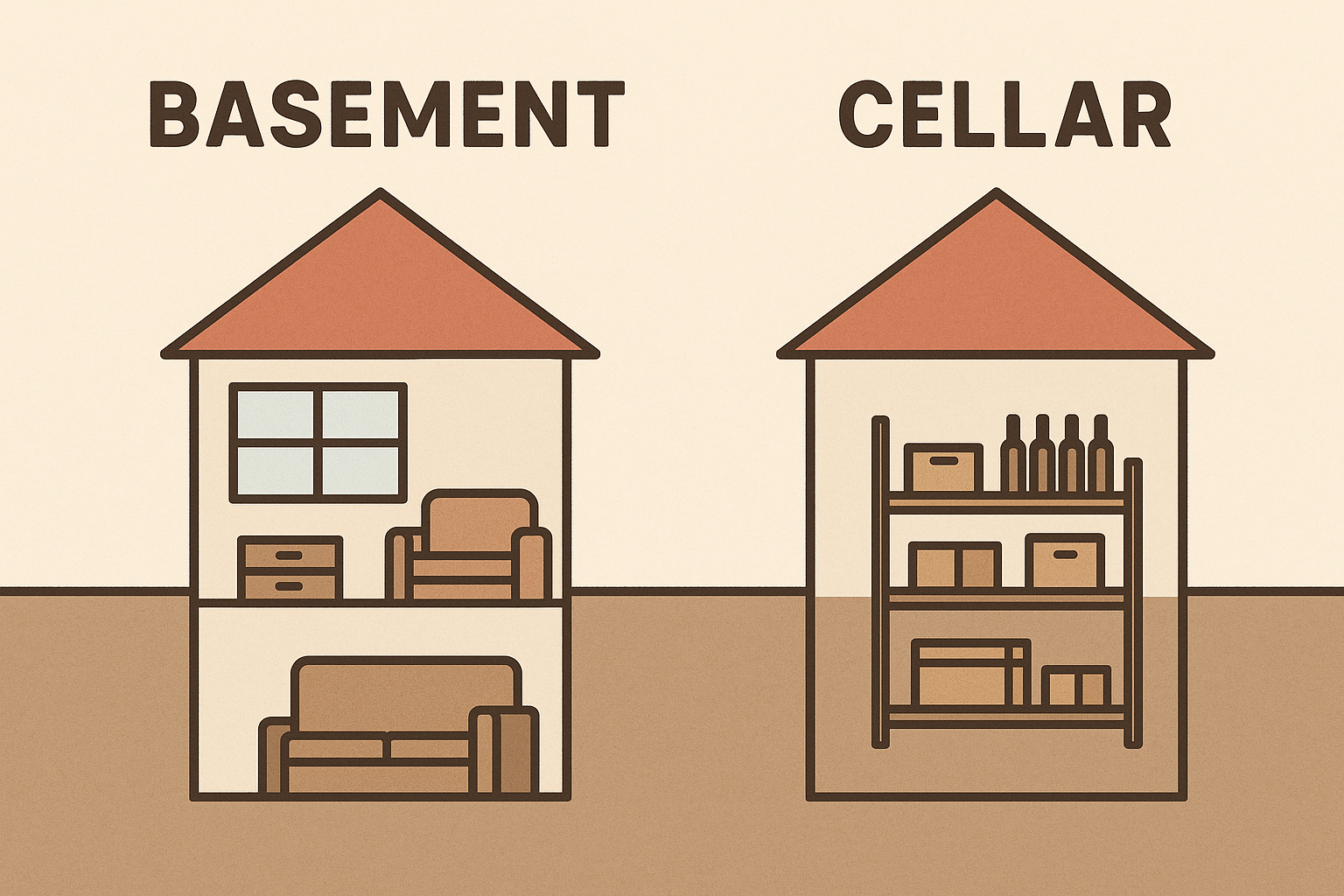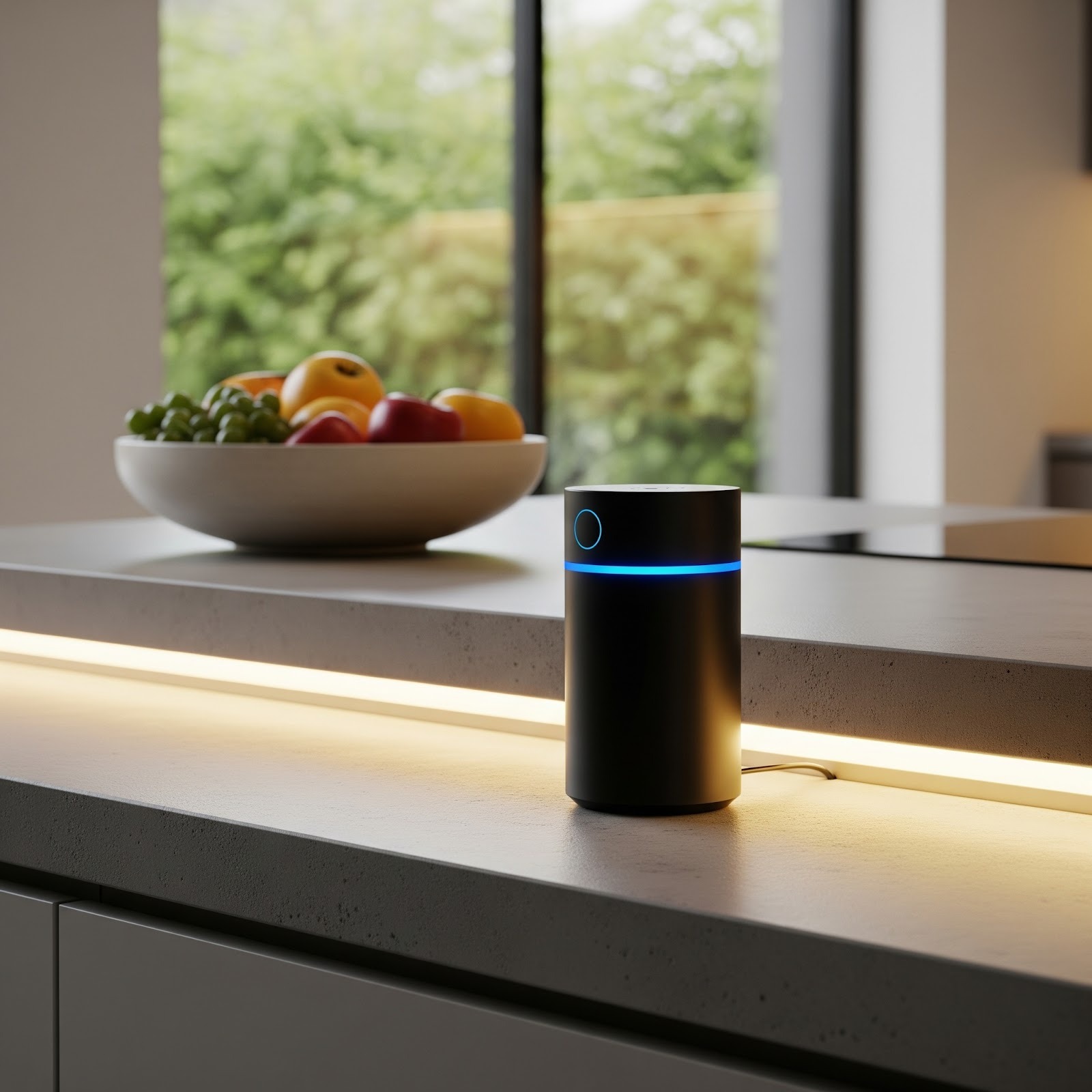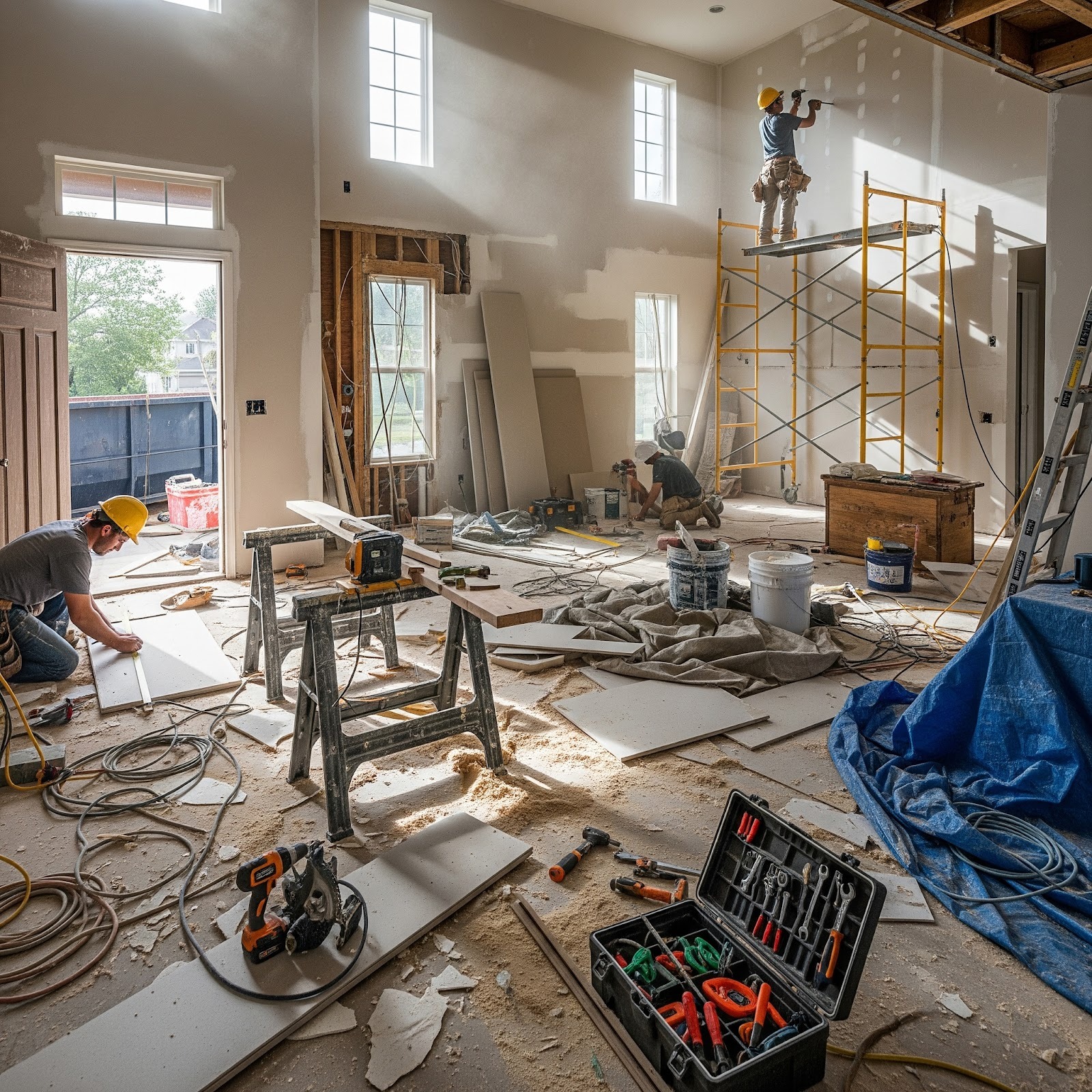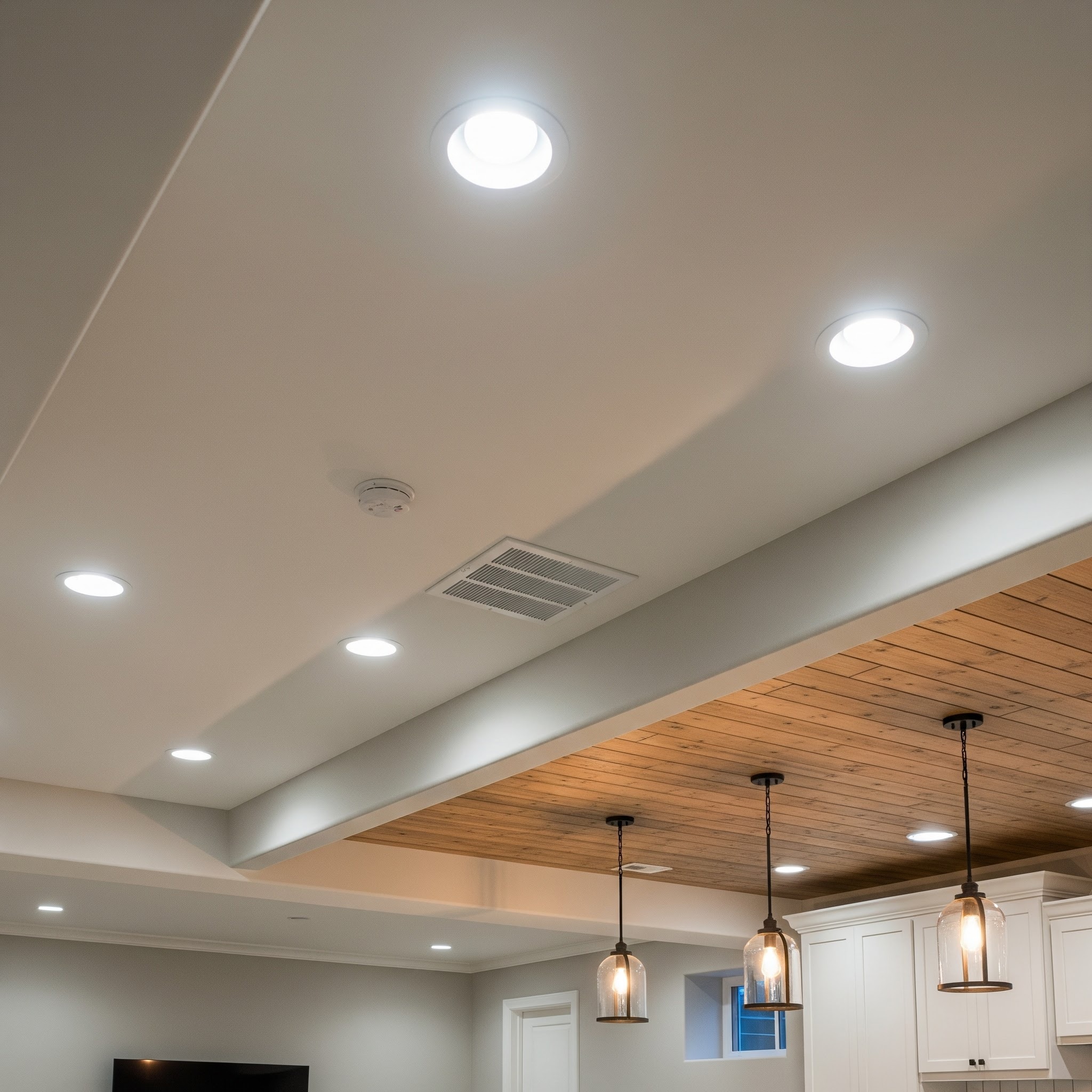You’ve been dreaming about it for months, maybe even years. New kitchen countertops, custom cabinets, that beautiful island you saw on Pinterest. But then reality hits: kitchen remodels can cost anywhere from $25,000 to $75,000 or more. Suddenly, your dream feels impossibly out of reach.
Here’s the truth: you don’t need to have tens of thousands of dollars sitting in your savings account to create the kitchen you’ve always wanted. Smart financing can make your dream kitchen affordable today, whether you have excellent credit, poor credit, or anything in between.
As Milton’s trusted kitchen renovation experts, we’ve helped hundreds of homeowners navigate the financing maze. This guide covers everything from traditional loans to government programs, from living through construction to maximizing your return on investment. We’ll address the real questions homeowners ask: What if I have bad credit? How do tax implications work? What’s it really like to live through a kitchen remodel?
Table of Contents
Why Most Homeowners Feel Overwhelmed by Financing Options
Let’s be honest, navigating kitchen remodel financing feels overwhelming because it is overwhelming. Between HELOCs, personal loans, cash-out refinancing, and contractor financing programs, the options seem endless. Add in confusing terms like APR, variable rates, and loan-to-value ratios, and it’s no wonder many homeowners either delay their projects indefinitely or make hasty decisions they later regret.
The good news? Once you understand your options, the path forward becomes much clearer.
Understanding Your Kitchen Remodel Financing Options
Unlike many contractors who only promote their own financing programs, we believe you deserve to understand every option available. Here’s an honest breakdown of the seven main ways to finance your kitchen remodel.
Learn what influences the cost of your kitchen remodel.
Option 1: Contractor Financing Programs (Like Ours)
How it works: Your remodeling contractor partners with lenders to offer financing directly through their company.
The benefits:
- Incredibly convenient, one application covers both your project approval and financing
- Often includes promotional offers like 0% interest for 12-18 months
- Streamlined process from design through completion
- No need to shop around for separate contractors and lenders
The considerations:
- Interest rates after promotional periods may be higher than other options
- You’re typically committed to working with that specific contractor
Best for: Homeowners who value convenience and want to work with a trusted contractor who offers competitive financing terms.
Option 2: Home Equity Line of Credit (HELOC)
How it works: You borrow against the equity you’ve built in your home, creating a revolving line of credit.
The benefits:
- Typically offers the lowest interest rates
- You only pay interest on what you actually use
- Potential tax advantages (consult your tax advisor)
- Flexibility to use funds for multiple projects over time
The considerations:
- Your home serves as collateral
- Interest rates are usually variable, meaning they can increase
- Requires significant home equity and strong credit
- Separate application process from your remodel planning
Best for: Homeowners with substantial equity and excellent credit who want the lowest possible rates.
Option 3: Personal Loans
How it works: An unsecured loan based on your creditworthiness and income.
The benefits:
- No collateral required, your home isn’t at risk
- Fixed interest rates mean predictable monthly payments
- Quick approval and funding process
- Can be used for any purpose
The considerations:
- Higher interest rates than secured loans
- Lower borrowing limits (typically $25,000-$50,000)
- Shorter repayment terms mean higher monthly payments
Best for: Homeowners with good credit doing smaller remodels who prefer not to use their home as collateral.
Option 4: Cash-Out Refinance
How it works: You refinance your existing mortgage for more than you owe and take the difference in cash.
The benefits:
- Access to large amounts of cash at mortgage rates
- Potential to lower your overall mortgage rate
- Long repayment terms keep monthly increases manageable
The considerations:
- You’re refinancing your entire mortgage, not just borrowing for the remodel
- Closing costs can be substantial ($2,000-$5,000+)
- Only makes sense if you can get a competitive rate
- Extends your mortgage repayment timeline
Best for: Homeowners with high-interest mortgages who can secure better rates while accessing cash for their remodel.
Option 5: Credit Cards (Including 0% APR Promotional Cards)
How it works: Use credit cards to pay for materials, labor, or specific purchases like appliances during your remodel.
The benefits:
- 0% APR promotional periods (typically 6-18 months) can make financing interest-free
- Immediate access to funds with no application process
- Good for smaller projects or specific purchases
- May earn rewards or cash back on purchases
The considerations:
- High interest rates (15-25%+) after promotional periods end
- Credit limits may not cover entire remodel costs
- Risk of accumulating high-interest debt if not paid off quickly
- Can impact your credit utilization ratio
Best for: Homeowners doing minor updates who can pay off the balance during the promotional period, or those who need to finance specific purchases like appliances.
Option 6: FHA 203(k) Rehabilitation Loans
How it works: Government-backed loans that combine home purchase or refinancing with renovation costs in a single mortgage.
The benefits:
- Lower down payment requirements (as little as 3.5%)
- Can finance up to 110% of the home’s future value after renovation
- More lenient credit requirements than conventional loans
- Can include up to six months of mortgage payments if the home is uninhabitable
The considerations:
- Must be your primary residence (not for investment properties)
- Requires working with FHA-approved contractors and consultants
- More paperwork and oversight than other loan types
- Interest rates typically 0.75-1% higher than standard FHA loans
Two types available:
- Limited 203(k): Up to $35,000 for minor improvements and repairs
- Standard 203(k): For major renovations over $5,000
Best for: First-time homebuyers, homeowners with limited equity, or those who want to combine home purchase/refinancing with renovation in one loan.
Option 7: Renovation-Specific Loans (Like RenoFi Loans)
How it works: These newer loan products let you borrow based on your home’s future value after the renovation is complete.
The benefits:
- Can increase borrowing power by up to 11x compared to traditional home equity loans
- Particularly helpful for newer homeowners with limited current equity
- Available as home equity loans, HELOCs, or cash-out refinances
- No need for construction loan complications
The considerations:
- Newer loan product with fewer lenders offering them
- Requires detailed renovation plans and contractor estimates
- Your home’s projected future value must be accurately assessed
Best for: Homeowners who recently purchased their home and haven’t built substantial equity yet, or those planning extensive renovations that will significantly increase home value.
Use our kitchen remodel cost calculator to get an instant idea on how much your kitchen renovation will cost.

Financing Options When You Have Poor Credit
If your credit score is below 650, don’t lose hope. While your options may be more limited and potentially more expensive, several paths can still lead to your dream kitchen:
- FHA 203(k) Loans: These government-backed loans have more lenient credit requirements, often accepting scores as low as 580. The government backing reduces lender risk, making approval more likely.
- Secured Personal Loans: If you have valuable assets like a car, savings account, or other property, you can use these as collateral to secure better loan terms despite poor credit.
- Co-Signer Options: Having someone with good credit co-sign your loan can dramatically improve your approval odds and interest rates. Just remember that your co-signer is fully responsible for the debt if you can’t pay.
- Credit Union Financing: Local credit unions often have more flexible lending criteria and may be willing to work with members who have less-than-perfect credit.
- Improve Your Credit First: If your project isn’t urgent, spending 6-12 months improving your credit score can save you thousands in interest. Even raising your score from 580 to 650 can significantly improve your loan terms.
Understanding the Tax Implications and Return on Investment
While financing your kitchen remodel requires careful planning, it’s important to understand both the immediate tax implications and long-term financial benefits:
Tax Considerations
For Your Primary Residence: Kitchen remodels aren’t immediately tax-deductible as a general rule. However, they can increase your home’s “cost basis” – the amount you’ve invested in the property. This higher basis can reduce capital gains taxes when you eventually sell your home.
Energy Efficiency Tax Credits: If your kitchen remodel includes qualifying energy-efficient improvements (like Energy Star appliances, efficient lighting, or better insulation), you may be eligible for federal tax credits up to $3,200. These are dollar-for-dollar reductions in your tax bill, not just deductions.
Home Office Deduction: If you have a legitimate home office, you may be able to deduct a percentage of your kitchen remodel costs based on the percentage of your home used for business.
Important: Always consult with a tax professional about your specific situation, as tax laws are complex and change frequently.
Return on Investment (ROI)
Kitchen remodels consistently rank among the best home improvements for ROI:
National Averages:
- Major kitchen remodel: Approximately 54% ROI
- Minor kitchen remodel: Up to 81% ROI
- Average cost recovery ranges from $20,000 to $40,000 on a $35,000-$50,000 investment
Beyond the Numbers: While you may not recoup 100% of your investment immediately, a well-designed kitchen provides daily enjoyment, improved functionality, and makes your home more attractive to future buyers. Studies show that 58% of buyers’ decisions are influenced by kitchen quality.
Documentation is Key: Keep detailed records of all improvement costs, including materials, labor, permits, and professional fees. These records will be valuable for both potential tax benefits and establishing your home’s cost basis for future sale.
What Most Contractors Won’t Tell You About Qualifying for Financing
Here’s where we believe in radical transparency. Most contractors are vague about qualification requirements, leaving you wondering if you’ll even be approved. We think you deserve to know upfront what lenders typically look for:
Credit Score Requirements:
- Excellent financing terms: 720+ credit score
- Good financing options: 650-719 credit score
- Limited options available: 580-649 credit score
- Specialized programs may be available below 580
Income and Employment:
- Stable employment history (typically 2+ years)
- Debt-to-income ratio below 43% (including your new loan payment)
- Documented income through pay stubs, tax returns, or bank statements
For Home Equity Products:
- At least 20% equity in your home (many lenders prefer 30%+)
- Home appraisal may be required
- Property must be your primary residence
The Hidden Costs Everyone Forgets to Mention
Smart financing goes beyond just the monthly payment. Here are the additional costs to factor into your decision:
Financing-Related Costs:
- Origination Fees: Many lenders charge 1-5% of the loan amount just to process your application
- Prepayment Penalties: Some loans charge fees if you pay them off early
- Appraisal Costs: Home equity products often require professional appraisals ($300-$500)
- Closing Costs: Refinancing can involve thousands in closing costs
Project-Related Expenses Often Overlooked:
- Permits and Inspections: Can range from $500-$2,000 depending on your location and project scope
- Temporary Living Costs: Eating out frequently during a 6-12 week remodel can add $1,000-$3,000 to your budget
- Storage Costs: You may need to rent storage for displaced appliances and belongings
- Utility Adjustments: Potential electrical or plumbing upgrades to meet current codes
- Change Orders: Even minor changes during construction can add 10-20% to your total cost
Timeline-Related Costs:
- Extended Temporary Kitchen Setup: Moving appliances, setting up temporary cooking space
- Delivery and Material Storage: Premium charges for rushed deliveries or storage fees
- Contingency Buffer: Professional contractors recommend budgeting 10-15% extra for unexpected issues like hidden water damage or structural surprises
At Artistic Construction, our financing partnerships are structured to minimize additional fees, and we’re always upfront about any costs involved. We also help you plan for the practical expenses that other contractors often forget to mention.
Making Your Monthly Payment Work for Your Budget
Here’s a simple framework for determining what monthly payment you can comfortably afford:
- Calculate your available budget: Look at your monthly income minus all fixed expenses (mortgage, utilities, insurance, groceries, etc.)
- Apply the 36% rule: Your total monthly debt payments (including your new remodel loan) shouldn’t exceed 36% of your gross monthly income.
- Build in a buffer: Life happens. Choose a payment that leaves room for unexpected expenses.
- Consider the payoff: A beautiful, functional kitchen adds value to your daily life and your home’s resale value.
Important Financing Consideration: Budget an extra $100-200 per week for takeout and restaurant meals during construction, as this temporary expense is often overlooked when calculating total project costs.
Our Simple Process: Design, Finance, and Build Under One Roof
What makes working with Artistic Construction different is our integrated approach. Instead of juggling separate relationships with designers, contractors, and lenders, everything happens seamlessly:
Step 1: Complimentary Design Consultation We’ll discuss your vision, assess your space, and provide preliminary pricing. During this conversation, we’ll also review financing options that fit your budget.
Step 2: Design Finalization and Financing Approval Once you love the design, we’ll help you complete your financing application. Our lending partners are pre-screened for competitive rates and efficient processing.
Step 3: Your Dream Kitchen Becomes Reality With financing secured and design approved, our award-winning team brings your vision to life. No coordination headaches, no communication gaps, just beautiful results.
Important Tax Documentation for Kitchen Financing
Proper financial documentation serves multiple purposes for your kitchen remodel financing:
Essential Records to Keep:
- All loan documents and payment records
- Receipts for materials, labor, permits, and professional fees
- Documentation of energy-efficient improvements for tax credit eligibility
- Detailed breakdown of costs (materials vs. labor) for tax basis calculations
Why This Matters for Your Financing:
- Tax Credits: Required documentation for claiming up to $3,200 in energy efficiency improvements
- Future Sale: Documented improvements increase your home’s cost basis, potentially reducing capital gains taxes
- Interest Deductions: Home equity loan interest may be tax-deductible when used for home improvements
We provide our clients with organized financial documentation that makes tax reporting simple and ensures you don’t miss any potential savings or credits.
Understanding Promotional Financing: The Fine Print
You’ve probably seen advertisements for “0% interest for 12 months” or “no payments until 2026.” While these can be legitimate money-saving opportunities, it’s important to understand how they work:
How Promotional Financing Works:
- Retailers and manufacturers offer temporary 0% interest periods
- If you pay off the entire balance before the promotional period ends, you pay no interest
- If any balance remains when the period expires, you’re often charged interest retroactively on the entire original amount
Best Practices for Promotional Financing:
- Calculate whether you can realistically pay off the balance during the promotional period
- Set up automatic payments to ensure you meet the deadline
- Read the fine print carefully – some programs have strict payment requirements
- Consider these programs for specific purchases (appliances, cabinets) rather than entire projects
When It Makes Sense:
- You have the cash flow to pay off the balance within the promotional period
- You’re purchasing a specific item with a clear promotional offer
- You want to preserve your other financing options for the main project
When to Avoid It:
- You’re not confident about paying off the balance in time
- The regular interest rate after the promotional period is extremely high (often 20-30%)
- You’re already managing multiple financing sources for your project
At Artistic Construction, we help you evaluate whether promotional financing from our supplier partners makes sense as part of your overall financing strategy, ensuring you get the best combination of terms for your complete project.
Why Milton Families Choose Artistic Construction
Over the past 22 years, we’ve had the privilege of transforming hundreds of kitchens throughout Milton and the surrounding areas. What our clients appreciate most isn’t just our craftsmanship, it’s our commitment to making the entire process as stress-free as possible.
When Sarah and Mike contacted us about their outdated kitchen, they were overwhelmed by the financing options and worried about taking on debt. By walking them through every option transparently and helping them secure 0% financing for 18 months, they were able to create their dream kitchen for just $425 per month. “The integrated process made everything so much easier,” Sarah shared. “We had one point of contact from design through completion.”
Ready to Explore Your Kitchen Financing Options?
Your dream kitchen is more affordable than you think, regardless of your credit situation or current financial position. From traditional financing options to government programs like FHA 203(k) loans, from promotional 0% interest deals to renovation-specific loans that use your home’s future value, there’s a financing path forward for every homeowner.
The key is understanding all your options, planning for the complete financial picture including hidden costs, and working with professionals who are transparent about financing terms and qualification requirements.
Key Financing Takeaways:
- Seven major financing options exist, each with different benefits and requirements
- Multiple financing solutions are available even for homeowners with poor credit
- Energy-efficient improvements may qualify for up to $3,200 in federal tax credits
- Kitchen remodels typically provide 54-81% return on investment
- Proper documentation can provide significant tax advantages when you sell your home
Schedule your complimentary design and financing consultation today. We’ll assess your space, discuss your vision, and review all applicable financing options that work for your budget and credit situation, all with absolutely no obligation.
During your consultation, we’ll:
- Provide a preliminary design and cost estimate
- Review all applicable financing options, including government programs
- Help you understand potential tax benefits and qualification requirements
- Create a comprehensive financing plan that fits your budget
- Explain any promotional financing opportunities from our partners
Because at Artistic Construction, we believe everyone deserves a kitchen they love, and transparent financing guidance makes it possible, regardless of your current credit or financial situation.
Frequently Asked Questions
Will checking my financing options hurt my credit score?
Our initial pre-qualification process uses a soft credit pull, which doesn’t affect your credit score at all. Only when you decide to move forward with a formal application do we perform a hard credit check.
How long does the approval process typically take?
Most of our financing partners provide approval decisions within 24-48 hours. Complex applications or unique financial situations may take a few additional days.
Can I finance the entire project, or do I need money down?
This depends on the financing option you choose. Many of our programs offer 100% financing, meaning you can start your remodel with no money down.
What if I want to pay off the loan early?
We work exclusively with lenders who don’t charge prepayment penalties, giving you the flexibility to pay off your loan early without additional fees.
Can I get financing for a kitchen remodel with bad credit?
Yes, several options exist for homeowners with credit scores below 650, including FHA 203(k) loans, secured personal loans, and programs with co-signers. While interest rates may be higher, financing is still possible.
What’s the difference between a Limited and Standard FHA 203(k) loan?
Limited 203(k) is for improvements up to $35,000 and has a simpler process. A Standard 203(k) is for major renovations over $5,000 and requires more oversight but allows structural changes.
How do I know if my kitchen remodel will qualify for energy efficiency tax credits?
Energy Star appliances, efficient lighting, and insulation improvements often qualify for federal tax credits up to $3,200. We can help you identify qualifying improvements during the design process.




